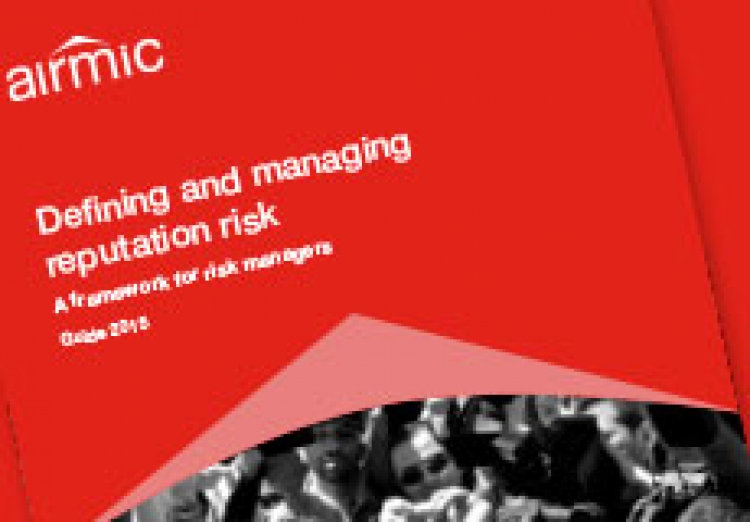Airmic and Reputation Institute unveil guide to reputational risk

Airmic has released a step-by-step guide to managing reputational risk and laid the foundations for increased insurance cover for losses incurred as a result of reputational damage.
The report, produced in partnership with Reputation Institute and launched at the conference in Liverpool, sets out a structured approach to understanding and mitigating the risk. It argues that reputation is an intangible risk grounded in emotion, but that by breaking down your reputation into measurable components, you can “make the intangible tangible”.
To this end, it provides a framework for businesses to consider the extent to which an event could reduce people’s trust in seven core areas of business: products / services, innovation, workplace, governance, citizenship, leadership and financial performance.
“Challenge and an opportunity”
Reputational risk has consistently come at or near the top of concerns for both risk managers and chief executives, yet only 3% of risk managers buy insurance cover and just one third say they have “high confidence” in their company’s management of the risk, according to a survey of Airmic members conducted this year.
John Hurrell, chief executive of Airmic, commented: “A company’s reputation is in many ways the most important risk to tackle because it underpins a company’s entire business model – and thereby its licence to operate. At the moment there is not enough understanding of the risk among businesses, risk managers or insurers. Our report aims to remedy this. It represents both a challenge and opportunity for the insurance market.”
View risk through the reputational lens
Kasper Ulf Nielsen, executive partner at Reputation Institute, who worked closely on the report, stressed the importance of looking at potential risk events through a reputational lens, arguing that the most successful companies constantly monitor how all stakeholders, from customers to financial analysts, perceive the company. “By understanding this perception, organisations can identify the potential reputation risks before they happen and mitigate them before they turn into full blown reputation crises,” he said.
Insurance products beginning to emerge
The report notes that availability of insurance cover for reputational risks is currently very limited although a few standalone products are beginning to emerge, and Airmic hopes the guide will lay the groundwork for greater risk transfer options in the future. “Our members have clearly expressed the desire for insurance products in this area and we hope this will support the risk community to have more meaningful conversations with underwriters and to express their needs more clearly,” Hurrell noted.
While reputational risk itself may currently be largely uninsurable, there is available cover for many of the risk events that can lead to reputational damage. One of the chief difficulties, however, is understanding what these events are, therefore Airmic hopes this report will help risk managers understand their exposures and encourage them to explore policy extensions for reputational impact for such events. These may include, for example, a consequential drop in revenue as a result of a hit to reputation, and post-incidentcrisis management costs.
Georgina Wainwright, R&D manager, on why Airmic is tackling reputation
